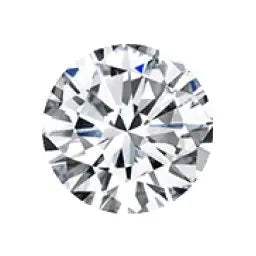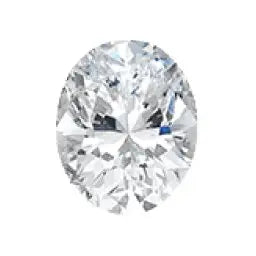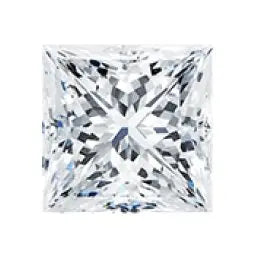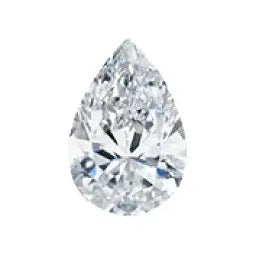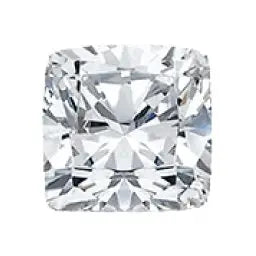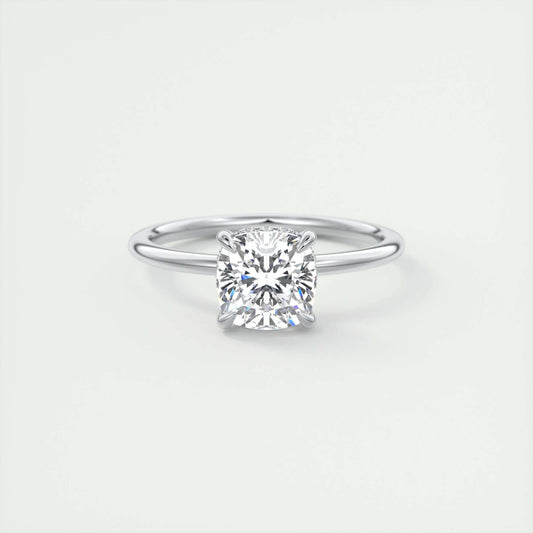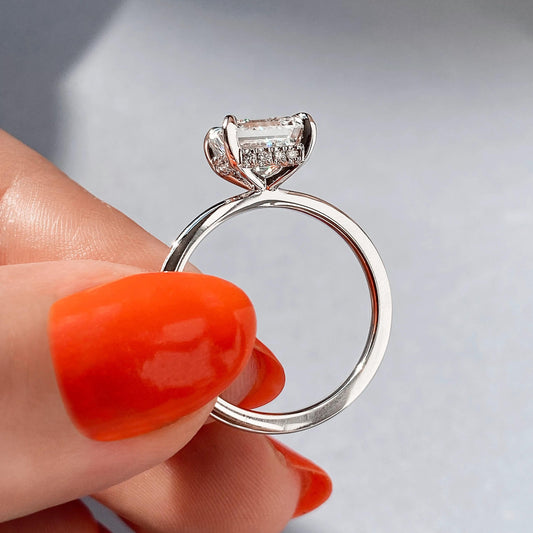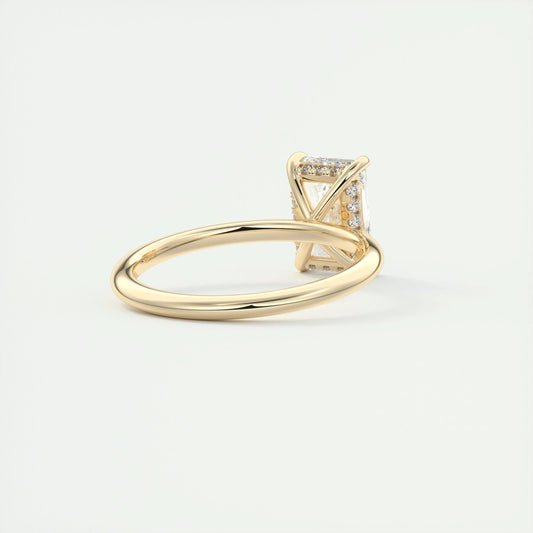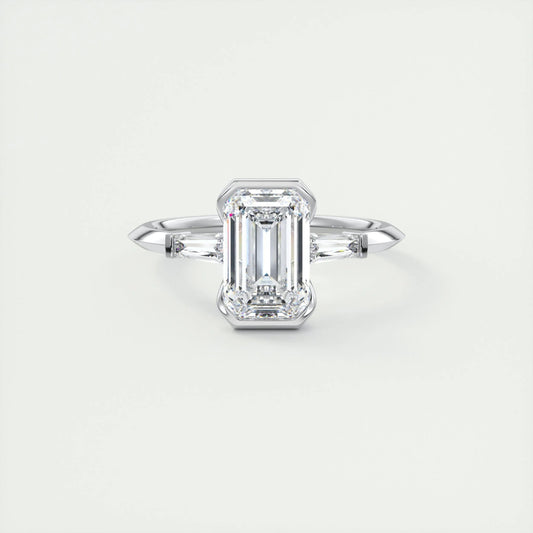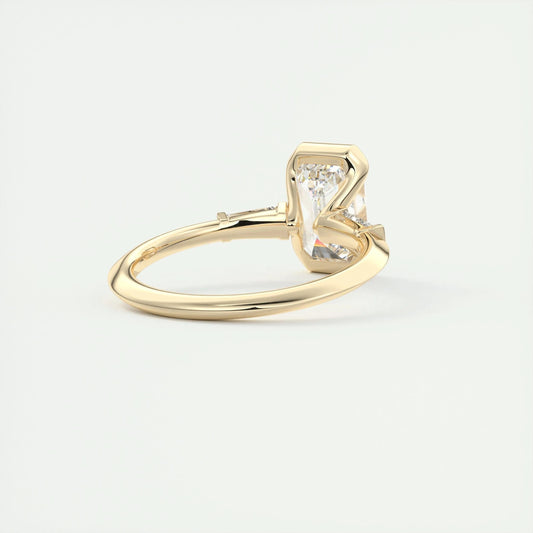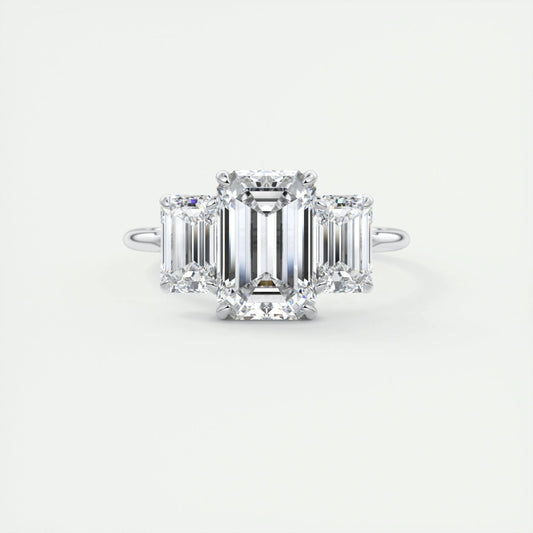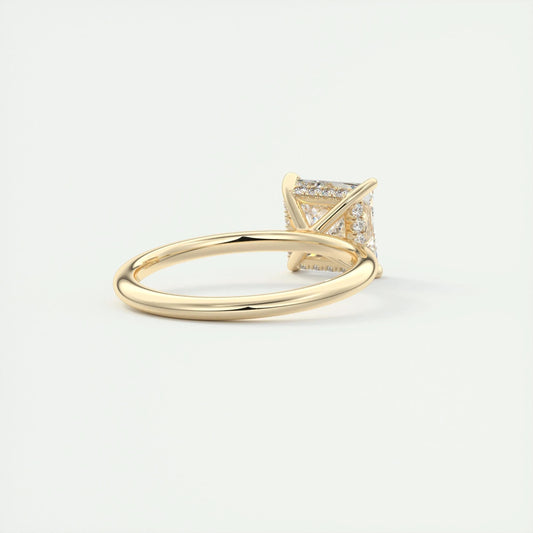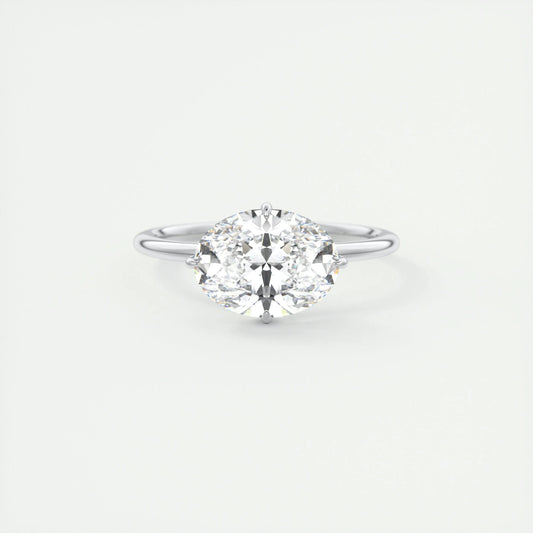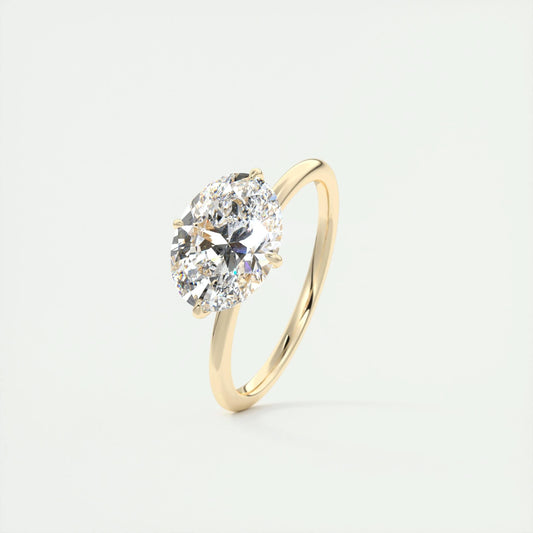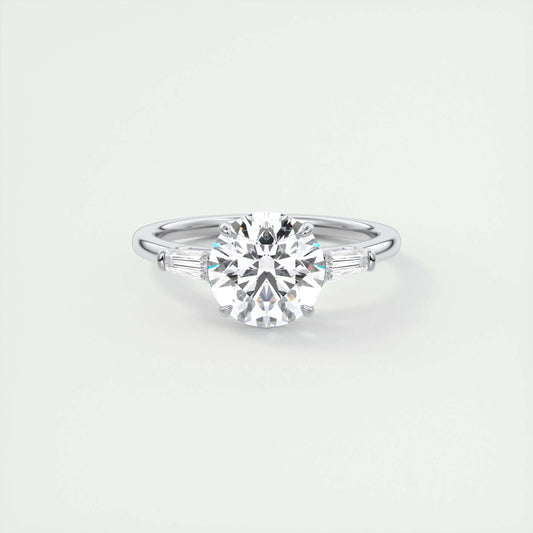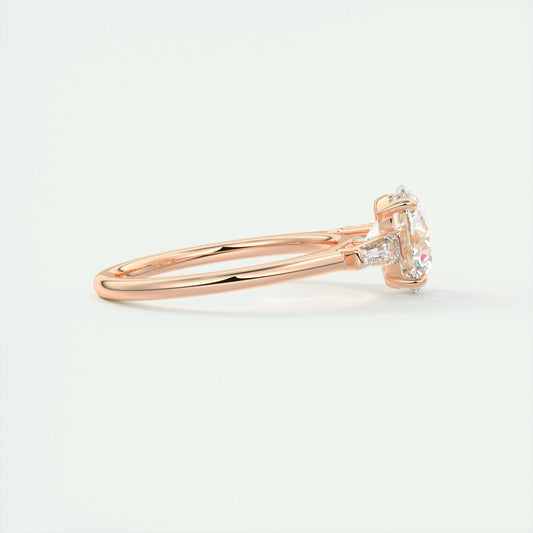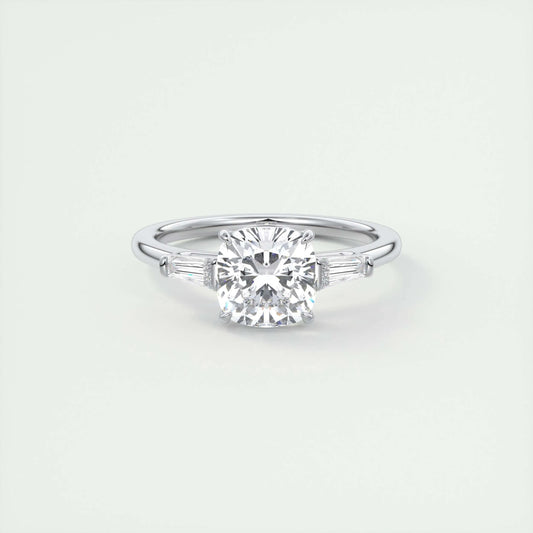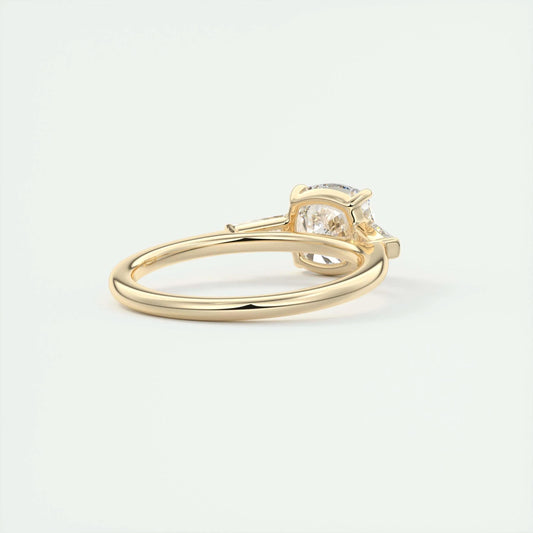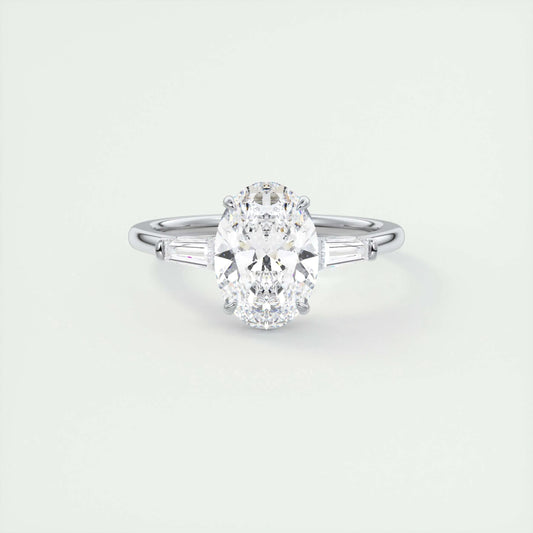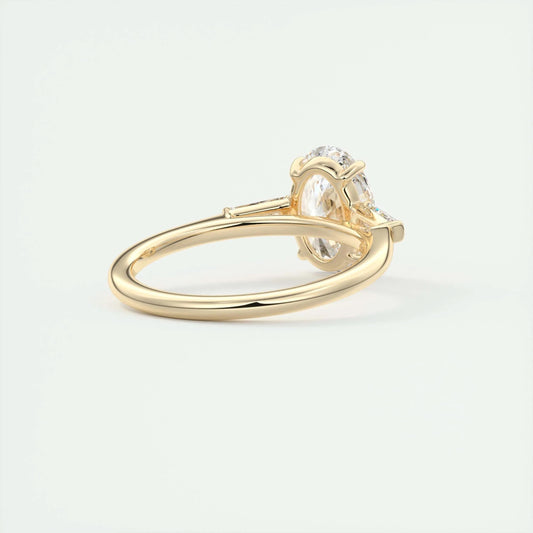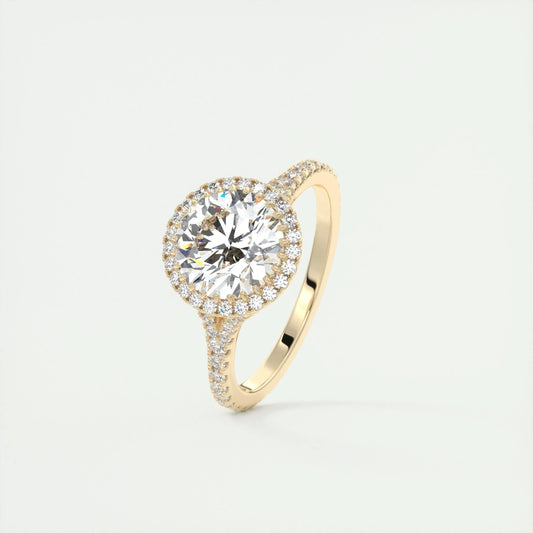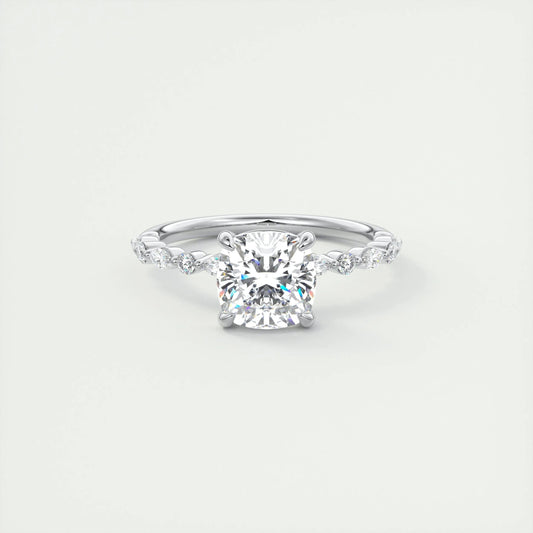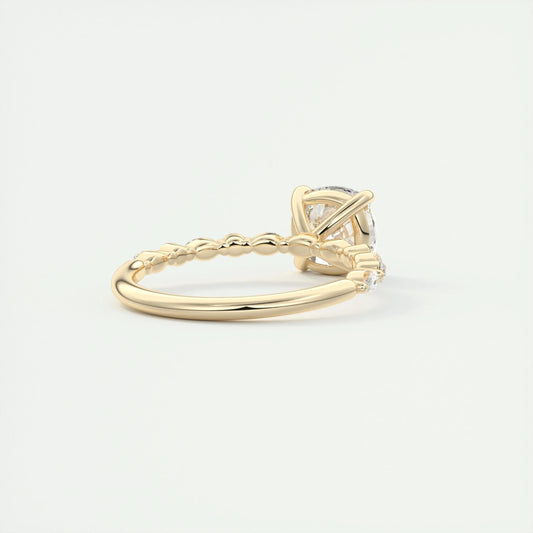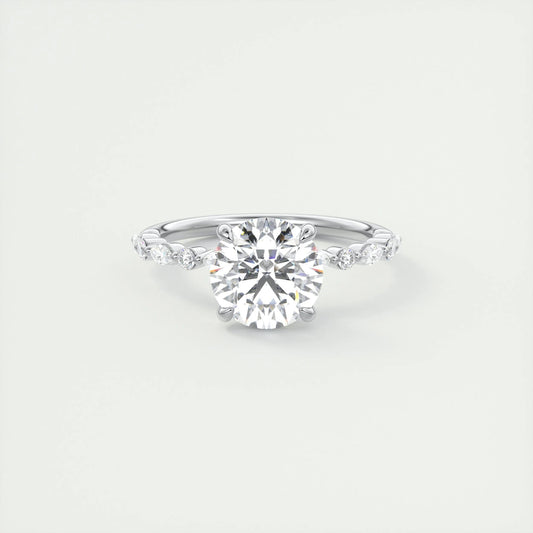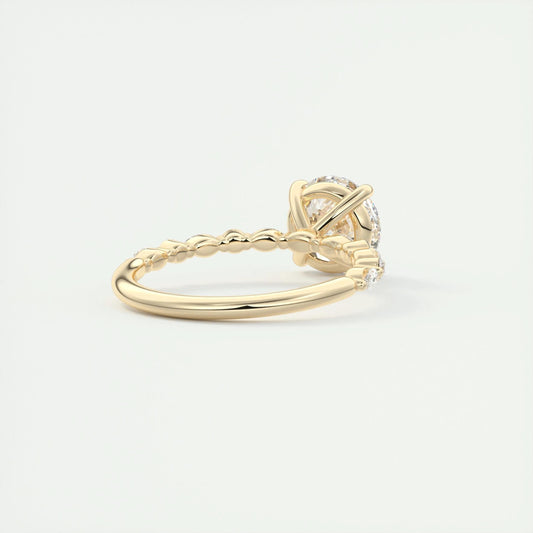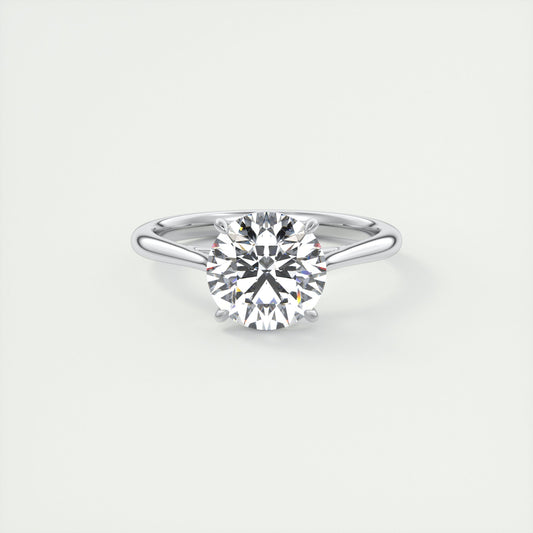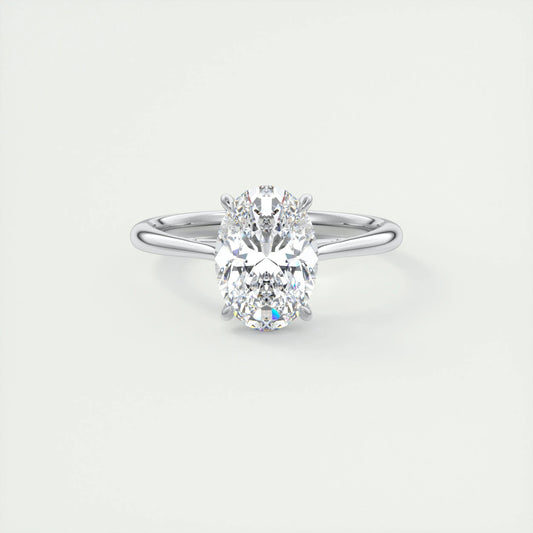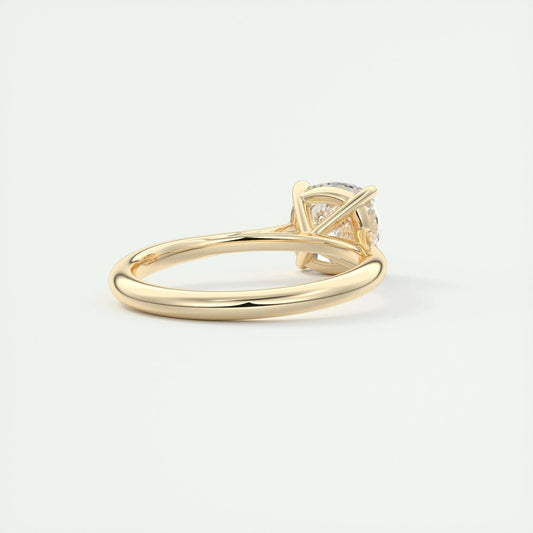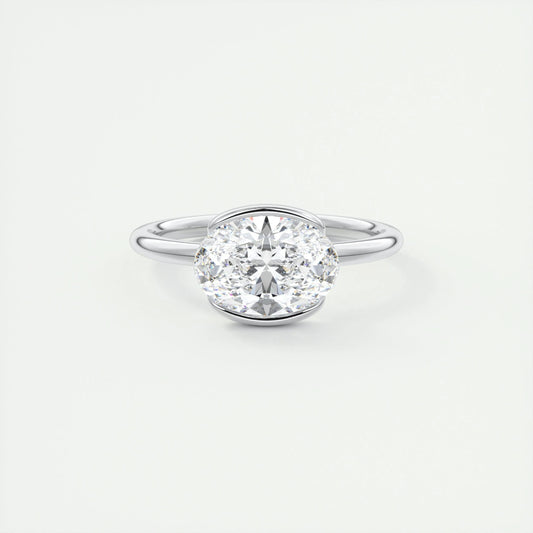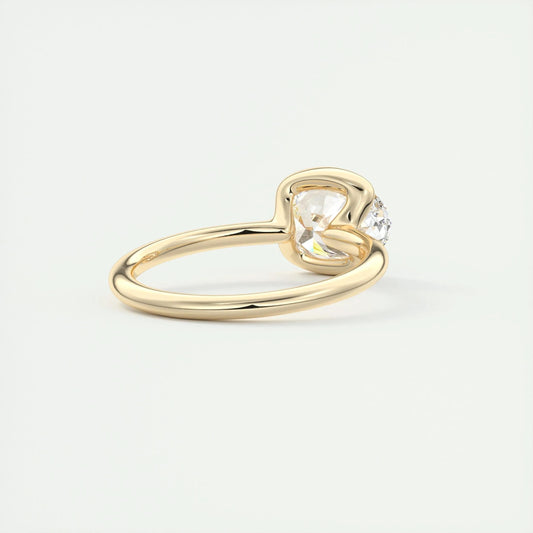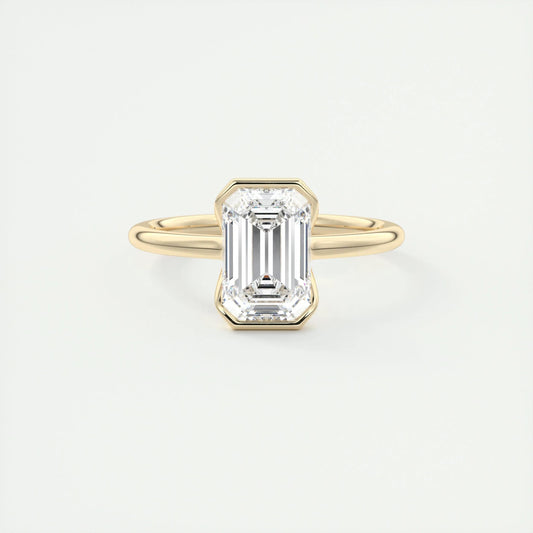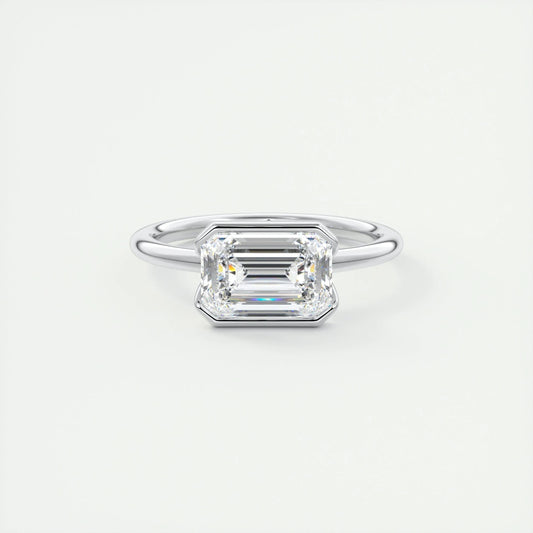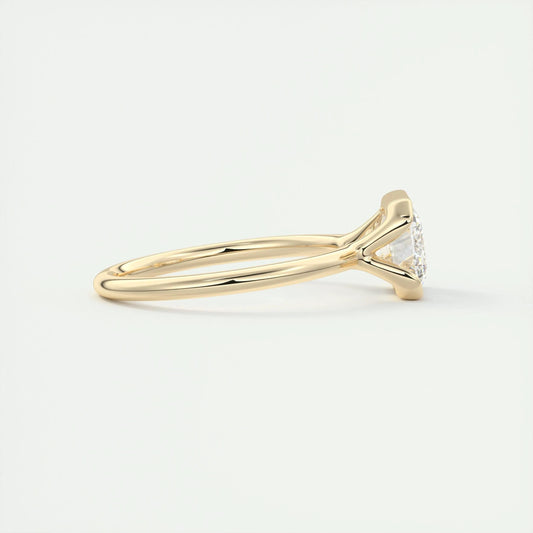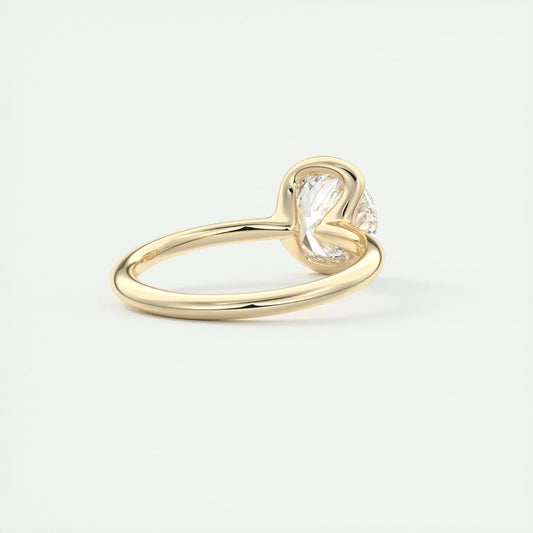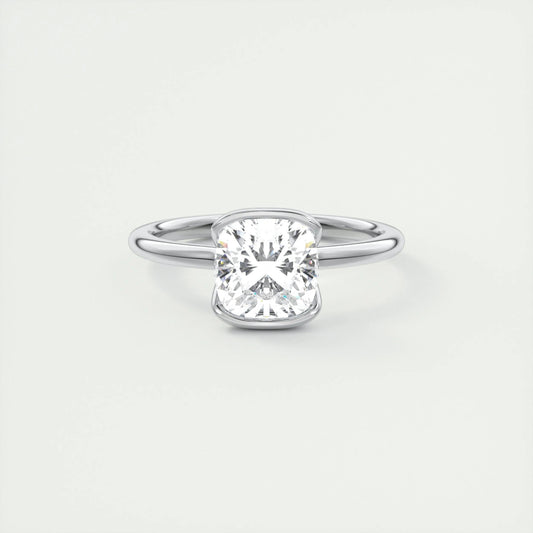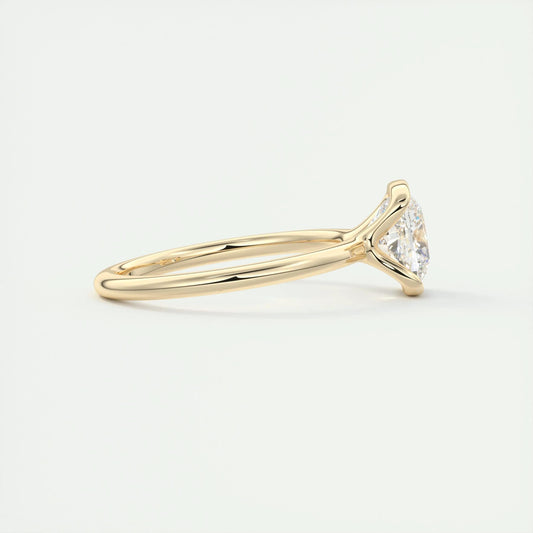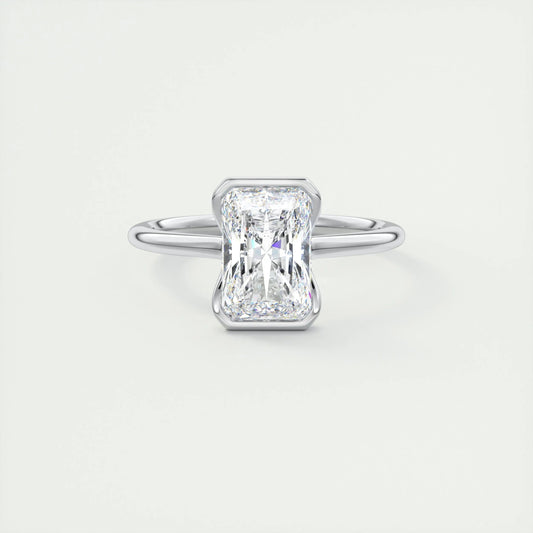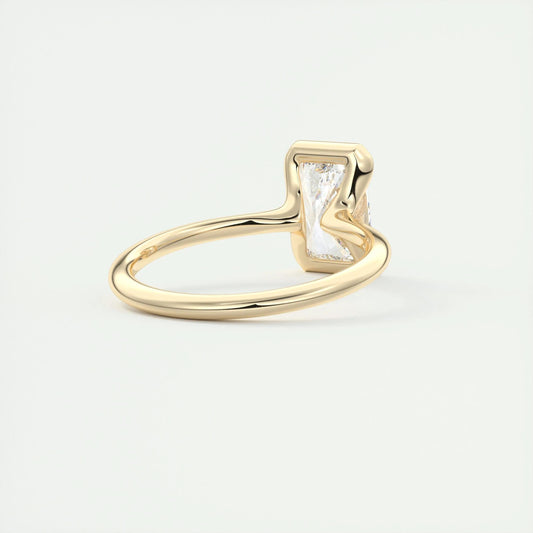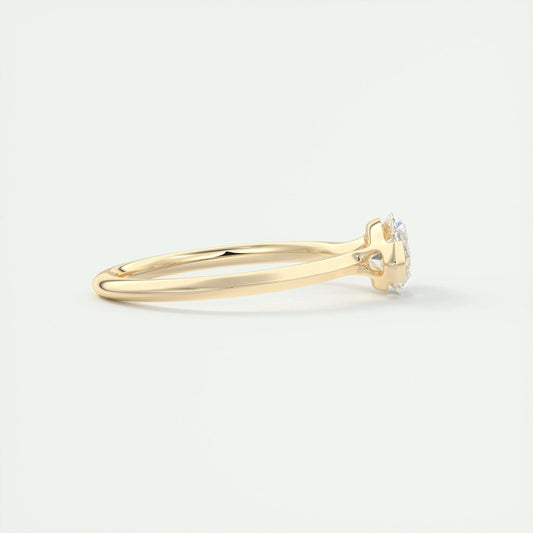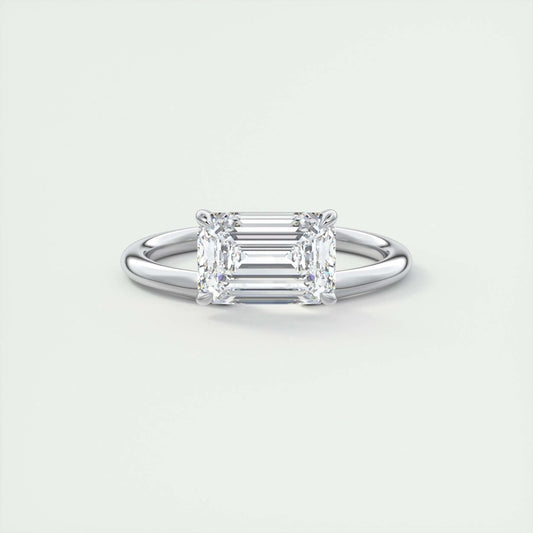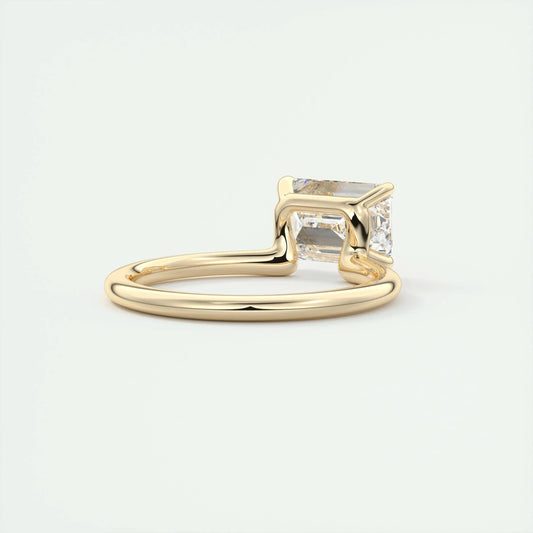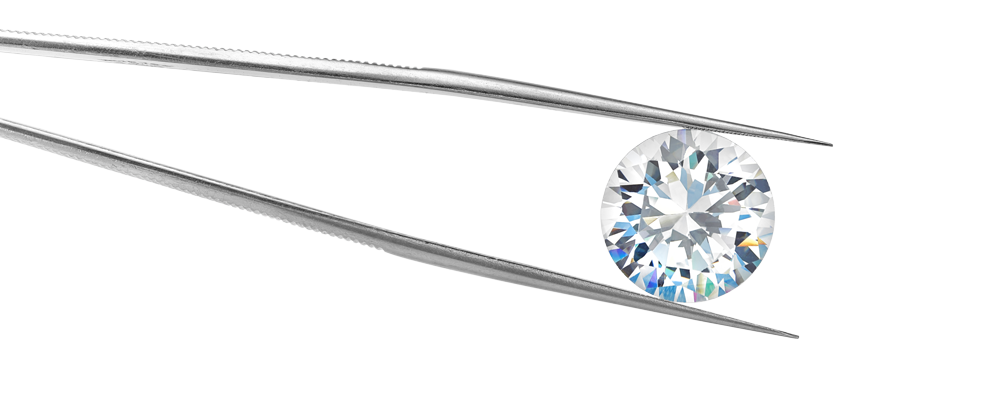
Three Factors For Choosing The Right Ring
Choosing the perfect ring comes down to the three main elements: setting, center stone, and metal. Read more about these to help define what your perfect ring looks like.
Setting
─────
The setting is the foundation of the ring and determines how the center stone is placed. Many styles are available, pick one that best matches your bride-to-be’s personal style. Below are some of the most common settings for engagement rings.

Solitaire
Solitaires are timeless classics. Derived from the Latin "solitarius," meaning alone or isolated, solitaires feature a single center stone with no additional diamond accents along the band. They can feature distinct design motifs, such as a split shank, textural element, or thick band width. In their most classic form (a simple, thin band with four to six prongs supporting the center stone), solitaires are the archetypal engagement ring and the most popular of all time.
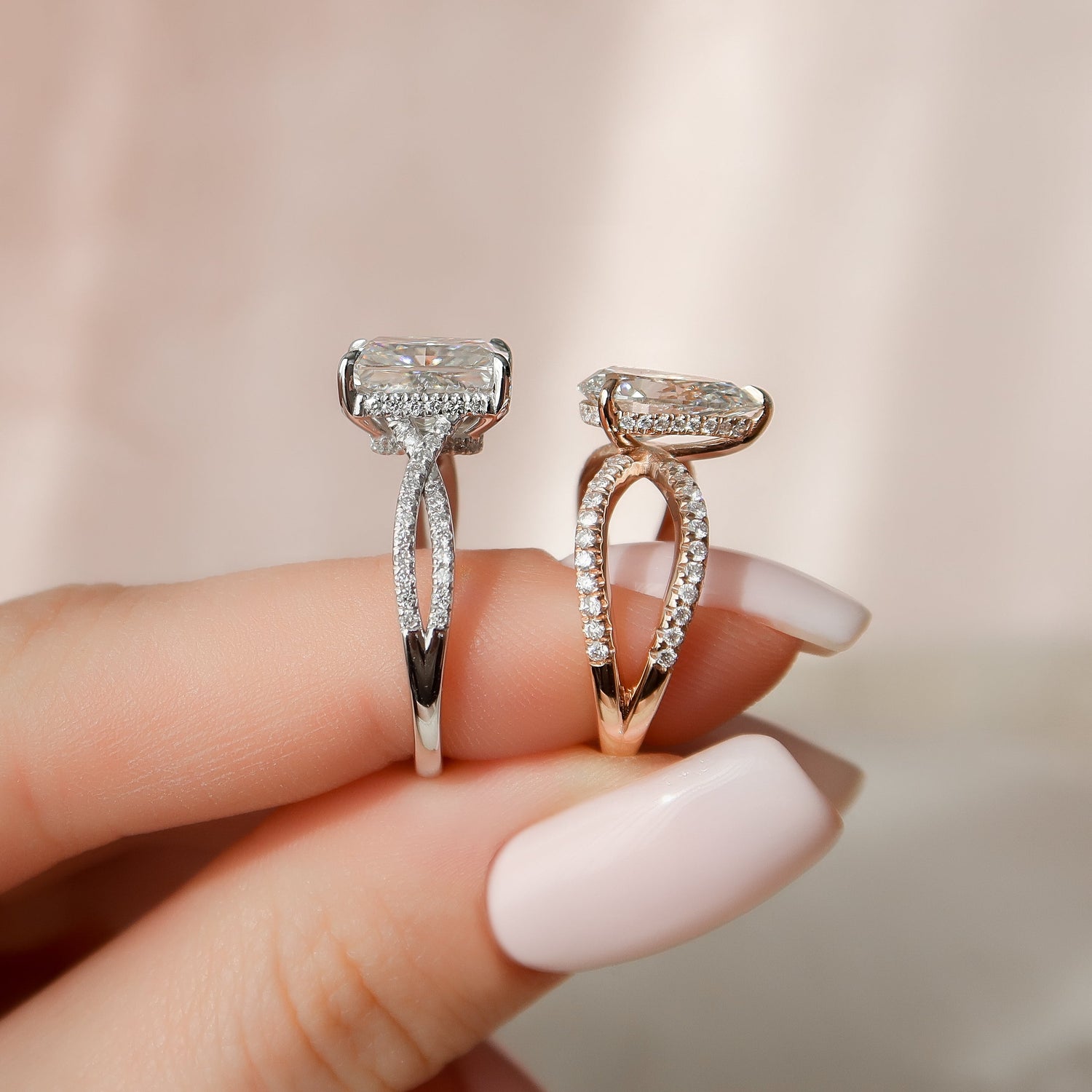
Hidden Halo
Instead of framing the center stone, the hidden halo setting sits below it and with the function of being the diamond’s base in a “hidden” way. The center stone is brighter from above than from any other angle because of the small stones visible. Hidden halo can be done in different shapes and styles,for example a round hidden halo, a drape hidden halo, which is a more ornate, soft and flowy design, a double hidden halo, or, one of the most traditional hidden halo rings, a halo on the basket, which is the part of the ring that holds the center stone.

Straight Rings
Designed to enhance rather than detract, straight engagement rings represent the perfect pairing of timeless simplicity and stylish sophistication. It draws the eye to the center stone while honoring the purity of the elegant silhouette.
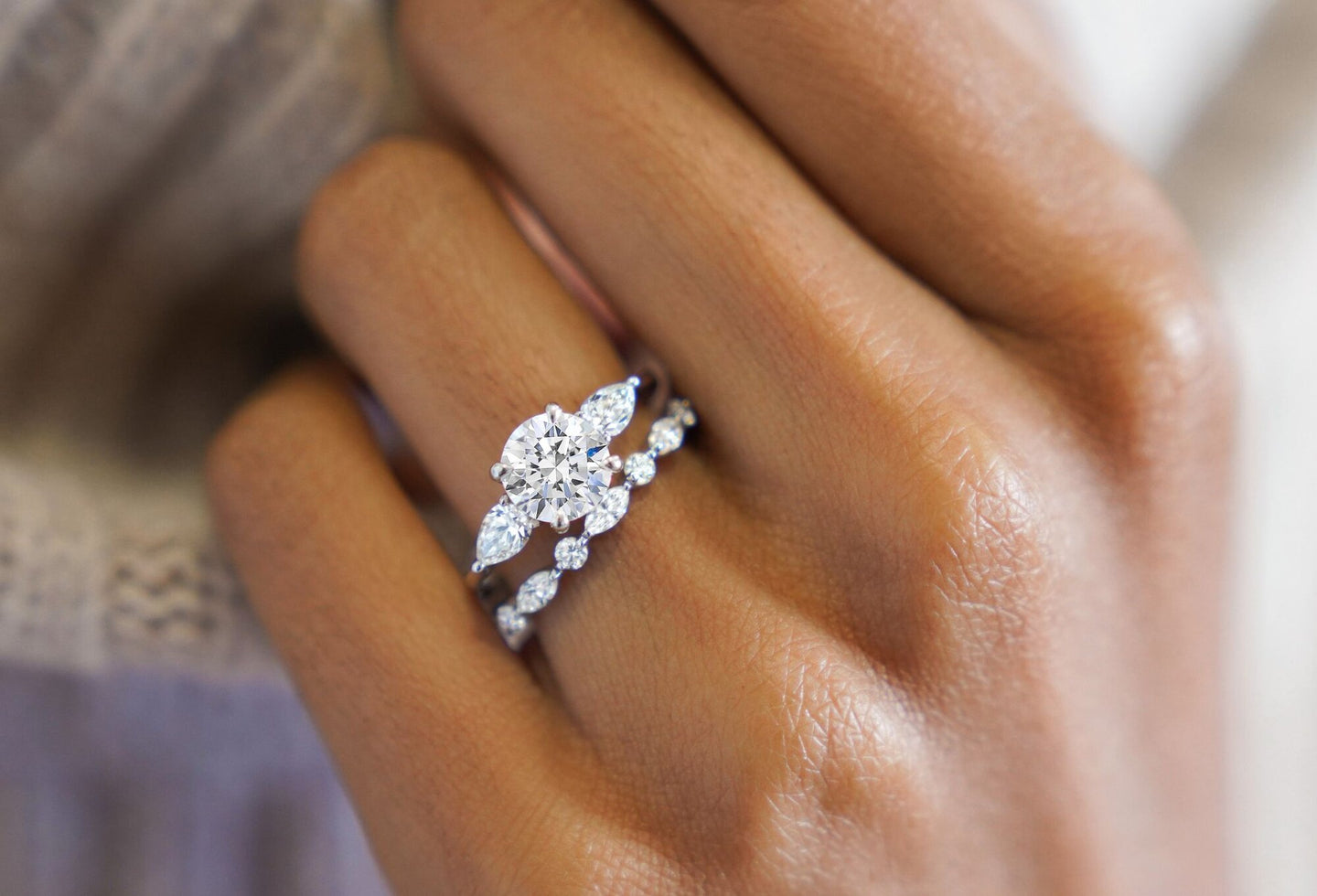
Three Stone
Three-stone engagement rings feature two large diamond accents along either side of the center stone. Together, they symbolize the past, present, and future. Historically, the accents are round but can come in various shapes, from baguette-cut to kite-shaped. While some three-stone engagement rings are traditional and sleek, others are more luxe: think of extra accents along the band or a hidden halo.
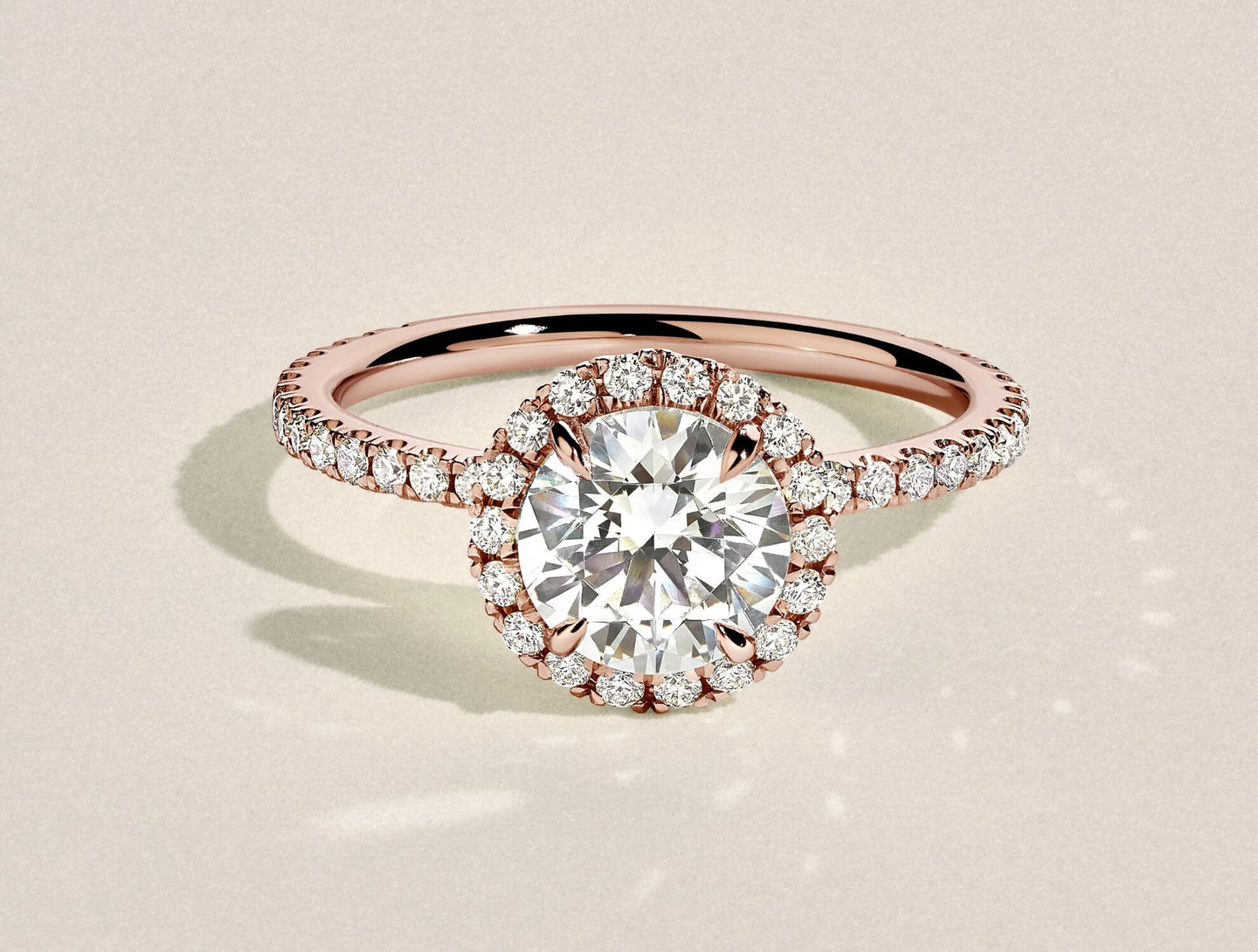
Halo
Halo engagement rings feature shimmering accents surrounding the center gemstone. These accents are traditionally diamonds but can be other gemstones such as sapphire, emerald, or ruby. These "angelic" styles are beloved for their added sparkle — they also have the unique ability to enhance the appearance of the center stone. Halo designs come in many forms, such as a round, square, or even floral silhouette. They can feature further accents along the band or a plain band.
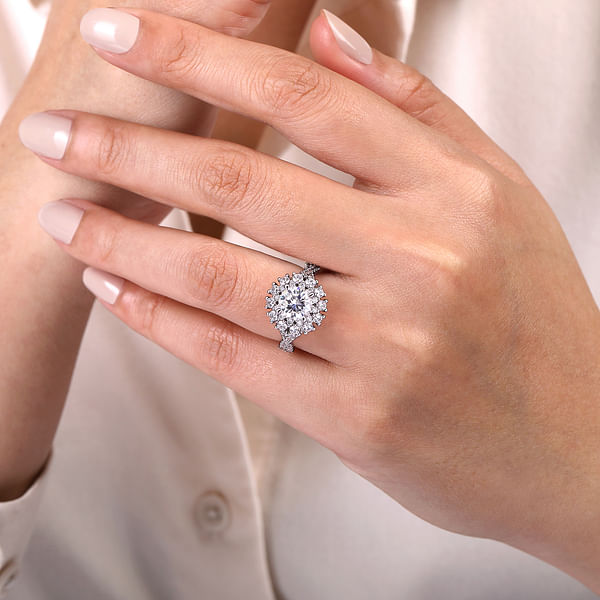
Double Halo Rings
Altered Carbons double halo engagement ring features a second halo of diamonds encircling the first, which makes the center stone appear even bigger and more brilliant. Because marriage is one of the most significant milestones in life, the ring you choose to commemorate the occasion must reflect the beauty of the moment.
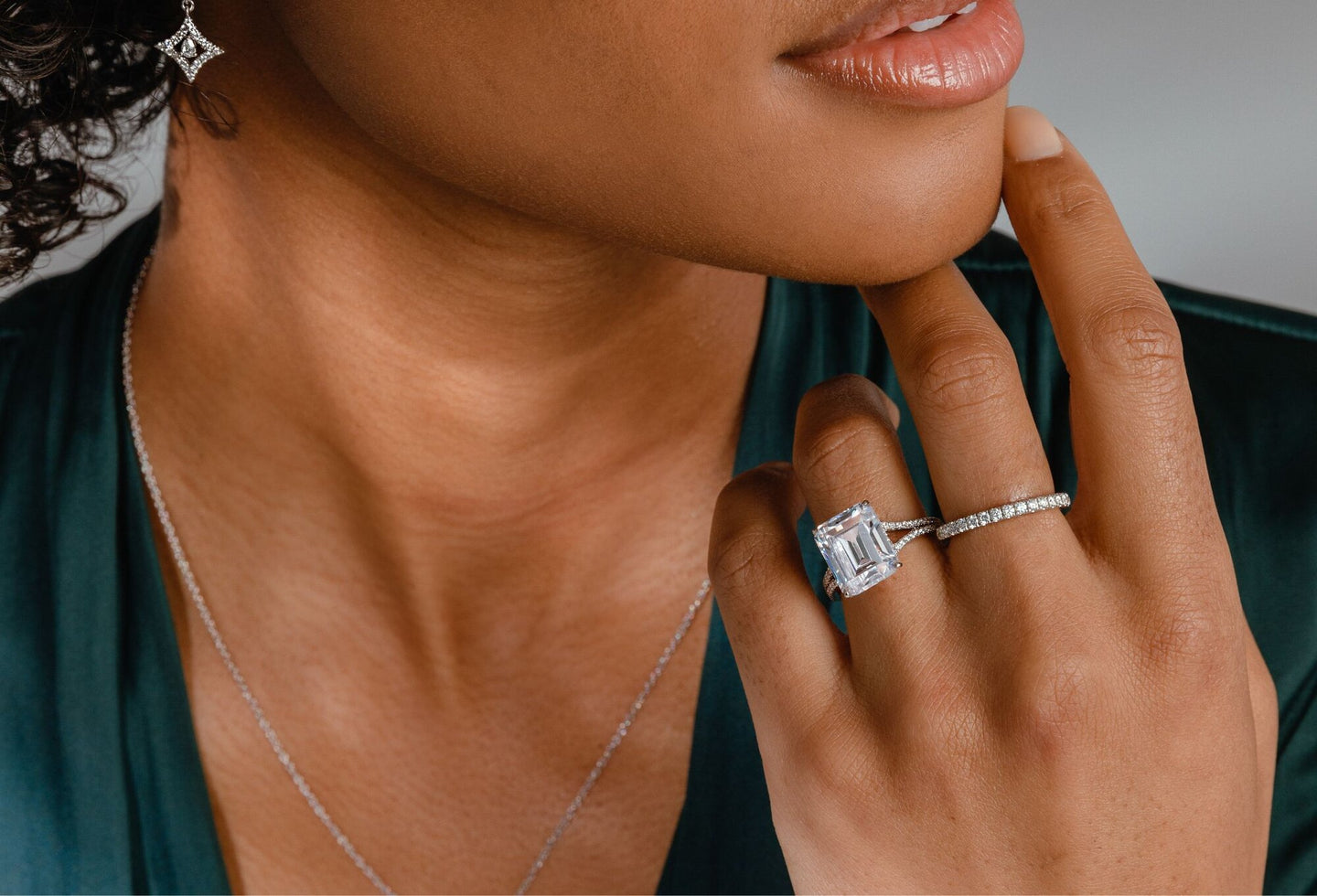
Split Shank
Split shank engagement rings feature a band that splits into two or more strands as it reaches the center stone. This creates an open, sculptural look that can accentuate the look of the center stone. Split shank designs can be solitaires or adorned with engravings or accents, but they all feature a single, double, or even triple split shank design.
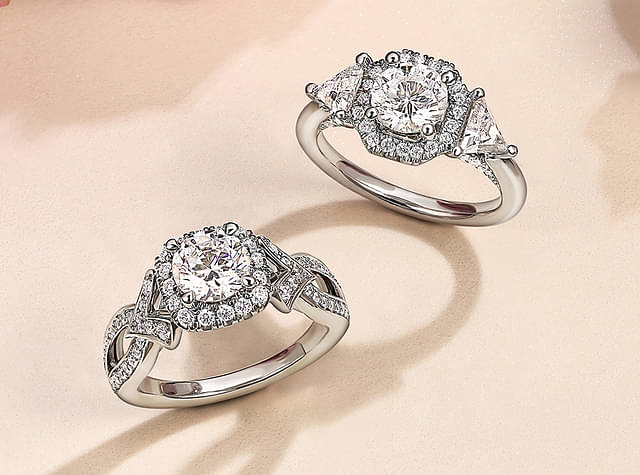
Three Stone Halo Rings
Combining the much-loved halo design with the rich symbolism of a three stone setting, the ultra-glamorous three stone halo engagement ring is born. With infinite sparkle, these rings are the ultimate statement maker.
Center Stone
─────
The heart and soul of every ring, the center stone is the main focal point for most engagement. The shape of the center stone is a personal choice, that speaks to the bride’s unique style and your personal love story.
Metal
─────
Each metal has unique characteristics that fit a variety of styles and personalities. Did you know not all metals can be used in purest form in jewelry? Some metals can either be too hard or too weak and in those instances they must be combine or alloyed with other metals to make them durable for long-lasting wear.


